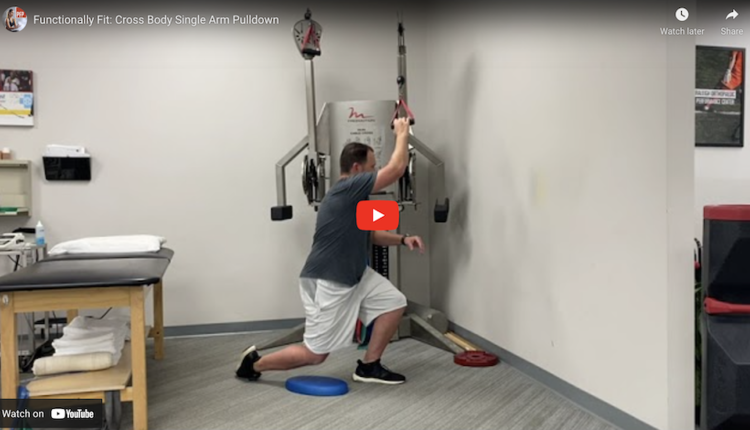
| Execution: Begin upright in single leg stance on the left side holding a kettlebell with both hands. Next, perform a single leg squat while reaching the right leg out away from the body. Try to reach as far as possible under control while allowing the right leg to hover above the ground without touching down. If you are about to lose balance, then lightly touch the toes of the right foot down to steady yourself. Pause at the point where the stance leg is about to begin collapsing inward, and then return to the starting position. Repeat this sequence for 10 repetitions, and then switch sides. Perform 2-3 sets on each side. |

Progression:
Hold the kettlebell in the contralateral hand (opposite the stance leg) and perform the same technique as mentioned above. If this becomes easy, consider an advanced progression using an ipsilateral approach (e.g stand on the left leg and hold the kettlebell in the left hand). In the ipsilateral approach, the kettlebell would be positioned in front of the stance leg.
Regression:
If using an external load prevents or hinders alignment, perform the exercise with body weight only until proper form has been mastered.
Application:
Single-leg stability is critical for all athletes and is often lacking or asymmetrical upon assessments. I rely on single-leg training progressions such as this to reduce/resolve poor frontal plane motor patterns, reduce injury risk and optimize performance. This exercise is great for training the trunk to resist unwanted lateral flexion as well as firing up the gluteals and entire lower leg. Clients love the challenge of balancing, and adding the kettlebell enables you to safely load the movement, maximize strength and minimize unwanted frontal plane motion.
Brian Schiff, PT, OCS, CSCS, is a licensed physical therapist, respected author and fitness professional. Currently, he serves as the supervisor for Athletes' Performance at Raleigh Orthopaedic in Raleigh, NC. Brian conducts live continuing education webinars and presents nationally at professional conferences and seminars on injury prevention, rehab and sport-specific training. For more information on his products and services, visit www.BrianSchiff.com.














